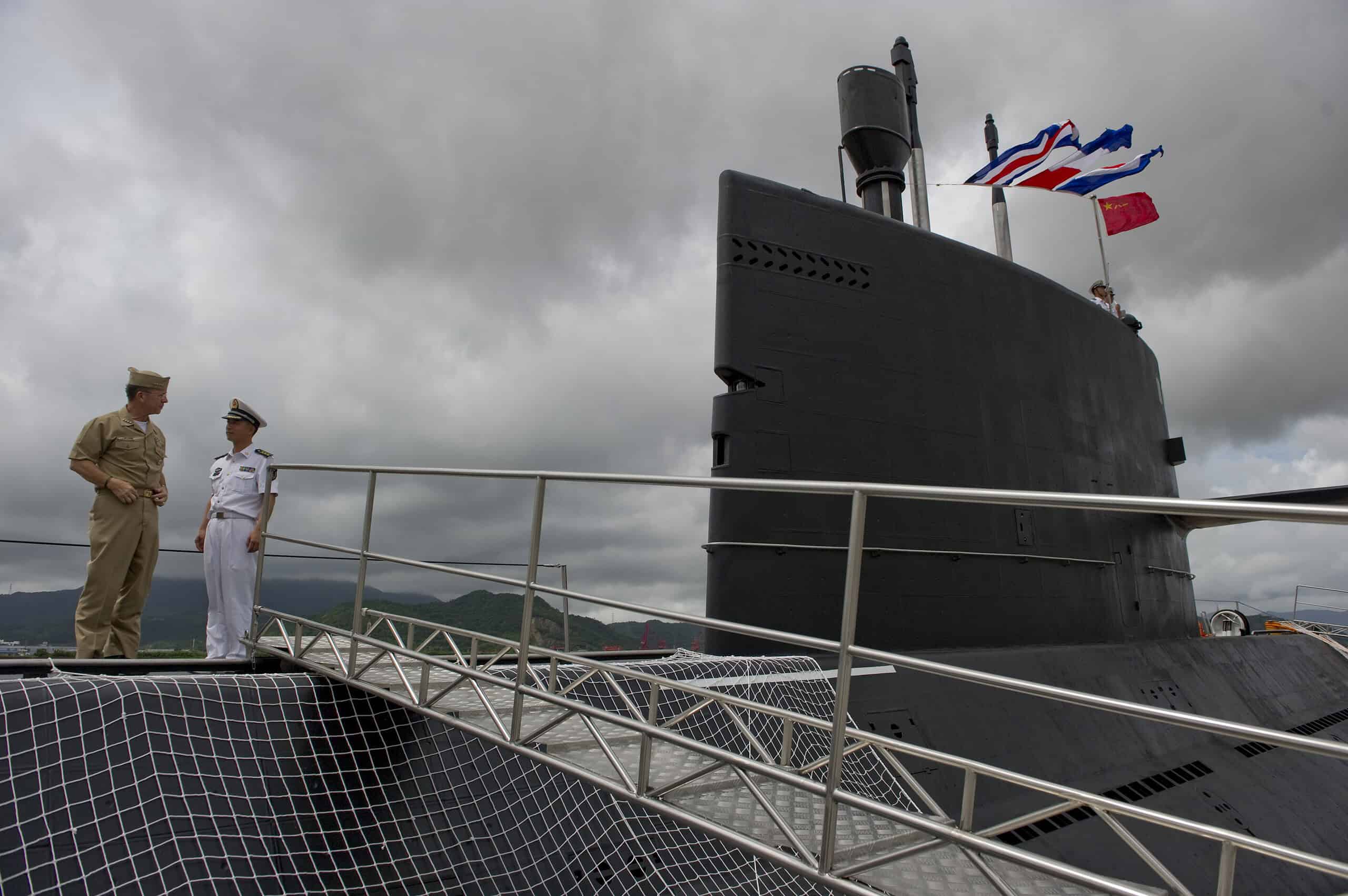
Chinese scientists at Harbin Engineering University have developed a laser propulsion system that promises a new era of submarine technology. Rather than using a propulsion shaft and propellers, the proposed system involves advanced laser pulses and fiber optics to generate thrust comparable to a commercial jet engine.
The entire system uses just 2 megawatts of laser power, which is within the power limits of a nuclear submarine. This breakthrough in efficiency was previously deemed unattainable.
A Quantum Leap in Submarine Propulsion
The technology, formally known as “underwater fiber laser-induced plasma detonation wave propulsion,” could theoretically enable submarines to travel at much higher speeds than currently possible. Additionally, there are no turbines or propellers. A laser-based submarine would not produce the mechanical vibrations that are often a dead giveaway for submarine location.
The pursuit of underwater laser propulsion is not new. Initially proposed by Japanese scientists two decades ago, the concept was a struggle to practically implement due to inefficiencies in directing the propulsion force. However, researchers led by Ge Yang, associate professor at the School of Mechanical and Electrical Engineering at Harbin Engineering University in Heilongjiang province, claim they’ve overcome these challenges by introducing mechanisms that focus and direct the laser-generated plasma in a controlled manner.
The principle behind this innovation involves creating bubbles through the vaporization of seawater, a phenomenon known as “supercavitation,” which dramatically reduces water resistance. The high-energy lasers fired from an array of optical fibers, each thinner than a human hair, generate plasma in the water, along with a detonation wave.

The innovation lies in harnessing this detonation wave, which expands in all directions and is extremely challenging to control to provide a driving force in a particular direction. The solution involves expelling tiny spherical metal particles upon which the detonation force is applied. When the metal particles leave one end of the submarine, in conjunction with the laser pulses, the underwater vehicle is propelled in the opposite direction.
“This method can also be applied to underwater weapons, causing a supercavitation phenomenon, thereby significantly increasing the underwater range of projectiles, underwater missiles, or torpedoes,” Ge told SCMP.
Challenges and Future Applications
Previous attempts involving this seemingly science fiction mode of propulsion have failed miserably, generating a pitiful amount of thrust. However, experiments carried out by Yang and colleagues suggest their technology can produce 70,000 newtons of thrust using two megawatts of laser power. That’s as much thrust as a commercial jet engine. However, you’d need much more than that to move a huge submarine like the kind used by militaries.
Despite the significant progress, numerous hurdles remain before this technology can be fully operational in military submarines. These include managing the heat generated by the lasers, ensuring the durability of optical fibers under extreme conditions. There is also the challenge of integrating the system with existing submarine structures like anechoic tiles.
Integrating this sort of technology is a supposedly stealthy submarine also raises some intriguing scenarios. While lasers would indeed remove the noise from mechanical vibrations, cavitation bubbles are by no means silent. In fact, the opposite may be true. It might make the sub a clear target for sonar, casting doubt over the viability of such a solution for military applications.
Still, beyond military uses, this technology holds promise for civilian applications, potentially revolutionizing how ships are powered and contributing to more environmentally friendly maritime travel.
The findings were reported in the Chinese academic journal Acta Optica Sinica.






